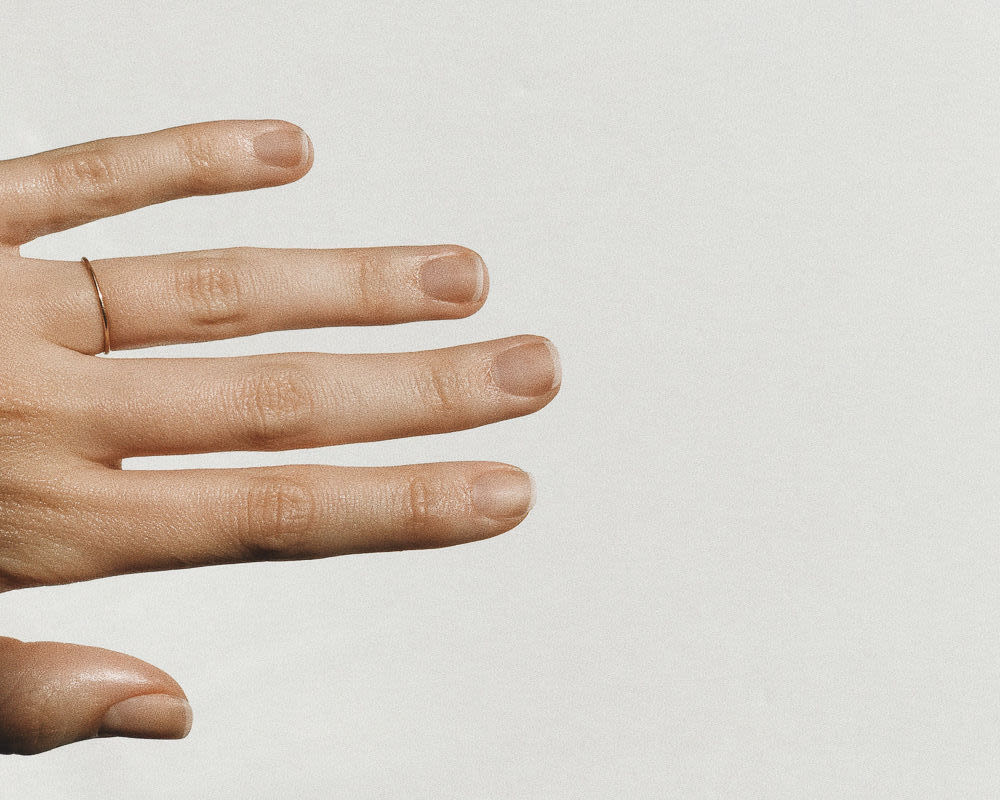Every five weeks, Richard Kronrad, 77, has a standing appointment at his local nail salon for a buff and shine manicure. “I’ve been getting manicures since I was maybe 20—so that’s 57 years of manicures,” he says over the phone. “I think it makes you look professional, and clean. And it makes me feel good.” But the buff and shine is a relatively new thing for him. “I started with the buffing maybe 15 years ago,” he says, noting that before then it wasn’t a popular salon service. He adds, “Men do many things now that women alone used to do, and nails are one of them.” And, of course, men’s stuff is now fair game for both genders, too. What’s been traditionally called a men’s manicure—the buff and shine that’s become Kronrad’s monthly ritual—is about to become the nail care decision du jour of chic, powerful women too busy for weekly polish changes. We’re calling it now.
The buff and shine manicure is a straightforward one. Cuticles are cleaned up, and nails are filed, shaped, and buffed to an almost clear coat-level shine. There’s no need to worry about chipping because it’s just your nail, and it doesn’t clash with anything because, well, it’s just your nail. To try it at home, you’ll need either a chamois buffer or a buffing block. Chamois buffers are made with cloth, and are designed to be used in tandem with a nail scrub known as “buffing paste.” You thinly coat the nail with the buffing paste, massage it in, and then make gentle side to side movements with the chamois to bring up the shine. The grit from the paste flattens out ridges and imperfections, and paraffin, which is also in the paste, fills in scratches to leave the nail smooth. Cool, right? But nothing new. Chamois buffers have been around since the Victorian era, and they’re actually banned from New York salons because they are nearly impossible to clean, so this is for at-home use only.
Something that is allowed in salons is the buffing block. It has four numbered sides—the first is for filing, and it’s too rough to use on nail beds. The remaining three vary in grit from relatively rough to very fine. The roughest side creates deep scratches in the nail to even out deep ridges. Then the medium grit smooths out the cuts and takes away texture. The third side, the softest, is used to bring up the shine by creating an extra-smooth finish like the one you’d get from a chamois. Because the grit is on the block, you don’t need to use a buffing cream. And after your nail technician is done with your manicure, your buffing block is tossed in the trash.
Salons point to the one-and-done nature of buffing blocks for the higher cost of buff and shine manicures, compared to traditional polish manicures that negate buffing blocks altogether. “The buffers themselves can be quite costly to the salon because they should not be used on multiple clients,” explains Nadine Abramcyk, co-founder of Tenoverten. At Tenoverten, the buff and shine is an off the menu secret for the same price as a classic mani. “It takes the same amount of time or in some cases less time than a regular manicure,” says Abramcyk, which is why she chooses not to charge extra for the service. “We always offer clients the option to keep the buffer to use as they'd like,” Abramcyk adds. While she notes that the shine should last a few days, the soft side of the buffer can easily be used to revive it.
For at-home use, both methods have their pros and cons. If you’re opting for a buff manicure to minimize your exposure to potentially toxic chemicals found in nail polish, you should know that parabens are in the buffing paste that you need to use with a chamois. On the other hand, the four-sided foam buffers are not as environmentally friendly as a reusable chamois. It’s also easier to overdo it with a four-sided buffer, especially if you accidentally use the side meant for filing on nail beds. Sometimes, especially vigorous buffing can lead to a nail condition called onycholysis, where the nail bed separates from the nail. To avoid this, make sure to space out your buffs, from every other week to once a month. “There was a point where I was getting buffing every week, and all of a sudden my nails became very, very soft,” said Kronrad. “It was taking too much of the nail off—I had to stop for a couple of months to let the nail grow out.”
When you do it right, the result is a clean, easy manicure with a little bit of shine. “It’s a really nice natural look,” says Abramcyk, and—on a man or woman—we’d have to agree.
Your buffing toolkit, below:
Photo via ITG

